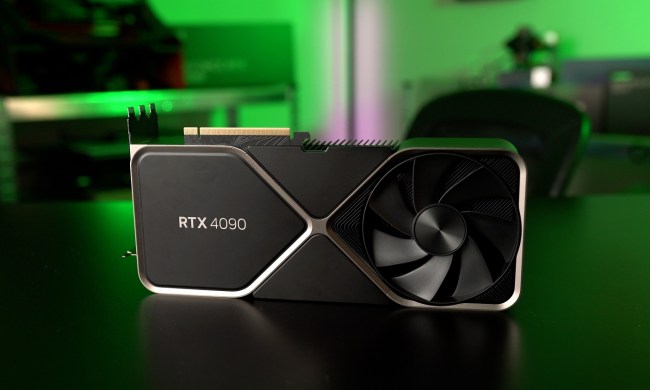Nvidia may be working on a new GPU that is expected to topple the GeForce RTX 3080 in terms of performance. A leaked list of drivers from PC maker HP posted by LaptopVideo2Go seemingly suggests that the unannounced RTX 3080 Ti could slot in between the RTX 3080 flagship and Nvidia’s enthusiast-class RTX 3090.
The card’s arrival — Nvidia hasn’t given any hints to when the RTX 3080 Ti will debut — could be welcome news for enthusiasts who have so far been unable to pick up an RTX 3080 due to a shortage of supply.
In addition to the RTX 3080 Ti, the leaked list of drivers reveal a number of Ampere graphics cards for desktop and mobile systems, including a mobile version of the popular midrange RTX 3070 with 16GB of memory, an RTX 3070 Ti, two variants of the RTX 3060, and an entry-level RTX 3050.
If accurate, the 16GB of memory means that the mobile RTX 3070 will come with double the video RAM of the current desktop RTX 3070, which tops out with 8GB currently. More memory could give this card terrific performance when used on mobile workstations and gaming laptops.

The leaked list of drivers actually does not reference the GPUs by their specific retail names, but when the device IDs are cross-referenced with the PCI ID list, according to PC Gamer, we can begin to identify the RTX models. When we cross-reference the 2205 model name from the driver list, we have the device ID of GA102, which is the model number for the RTX 3080 Ti.
The RTX 3080 is already generating positive reviews for its performance since its debut, and the RTX 3080 Ti should deliver even better performance for enthusiast gamers who don’t want to pay a premium for the RTX 3090. For reference, the RTX 3080 is priced at $699 and the RTX 3090 is priced at $1,499. Currently, pricing information is not known for the Ti variant, but it is speculated that the card could cost $999, which is still lower than the prior-generation GeForce RTX 2080 Ti, a Turing-based GPU that debuted at $1,199.
Unlike the 10GB of GDDR6X video RAM that’s currently supported on the RTX 3080, the Ti variant will ship with 20GB, which should help Nvidia’s specs list read more competitively against AMD’s recently announced Radeon RX 6800 XT. The Radeon card comes with 16GB of memory, which is 60% more than what Nvidia currently supports on the RTX 3080, but still less than what Nvidia may have planned on the RTX 3080 Ti. AMD, however, uses a slower GDDR6 memory standard but makes optimizations elsewhere in the chip’s design to squeeze more bandwidth.
With more Ampere-based GPUs reportedly in the pipeline from Nvidia, gamers will have more options — and even more powerful ones — than what is available today.
Given the extensive number of unannounced GPUs on this list, it’s unclear when Nvidia will announce these Ampere-based graphics cards. The company is already struggling to keep up with demand, with executives hinting that supply-side shortages of components may be to blame. Rival AMD is also plagued with shortages of its recent GPUs, and it’s expected that GPU shortages will persist until early 2021.
Depending on when these leaked RTX GPUs launch, they could still be subject to the same supply-side shortage.



